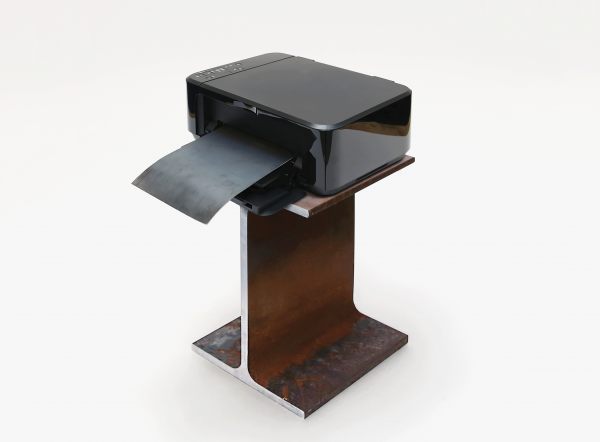While 3-D printing has been around for decades, it has remained largely in the domain of hobbyists and designers producing one-off prototypes. And printing objects with anything other than plastics—in particular, metal—has been expensive and painfully slow.
Now, however, it’s becoming cheap and easy enough to be a potentially practical way of manufacturing parts. If widely adopted, it could change the way we mass-produce many products.
3-D Metal Printing
Breakthrough
Now printers can make metal objects quickly and cheaply.
Why It Matters
The ability to make large and complex metal objects on demand could transform manufacturing.
Key Players
Markforged, Desktop Metal, GE
Availability
Now
In the short term, manufacturers wouldn’t need to maintain large inventories—they could simply print an object, such as a replacement part for an aging car, whenever someone needs it.
In the longer term, large factories that mass-produce a limited range of parts might be replaced by smaller ones that make a wider variety, adapting to customers’ changing needs.
The technology can create lighter, stronger parts, and complex shapes that aren’t possible with conventional metal fabrication methods. It can also provide more precise control of the microstructure of metals. In 2017, researchers from the Lawrence Livermore National Laboratory announced they had developed a 3-D-printing method for creating stainless-steel parts twice as strong as traditionally made ones.
Also in 2017, 3-D-printing company Markforged, a small startup based outside Boston, released the first 3-D metal printer for under $100,000.
Another Boston-area startup, Desktop Metal, began to ship its first metal prototyping machines in December 2017. It plans to begin selling larger machines, designed for manufacturing, that are 100 times faster than older metal printing methods.
The printing of metal parts is also getting easier. Desktop Metal now offers software that generates designs ready for 3-D printing. Users tell the program the specs of the object they want to print, and the software produces a computer model suitable for printing.
GE, which has long been a proponent of using 3-D printing in its aviation products (see “10 Breakthrough Technologies of 2013: Additive Manufacturing”), has a test version of its new metal printer that is fast enough to make large parts. The company plans to begin selling the printer in 2018. 
Hi! I am a robot. I just upvoted you! I found similar content that readers might be interested in:
https://www.technologyreview.com/lists/technologies/2018/